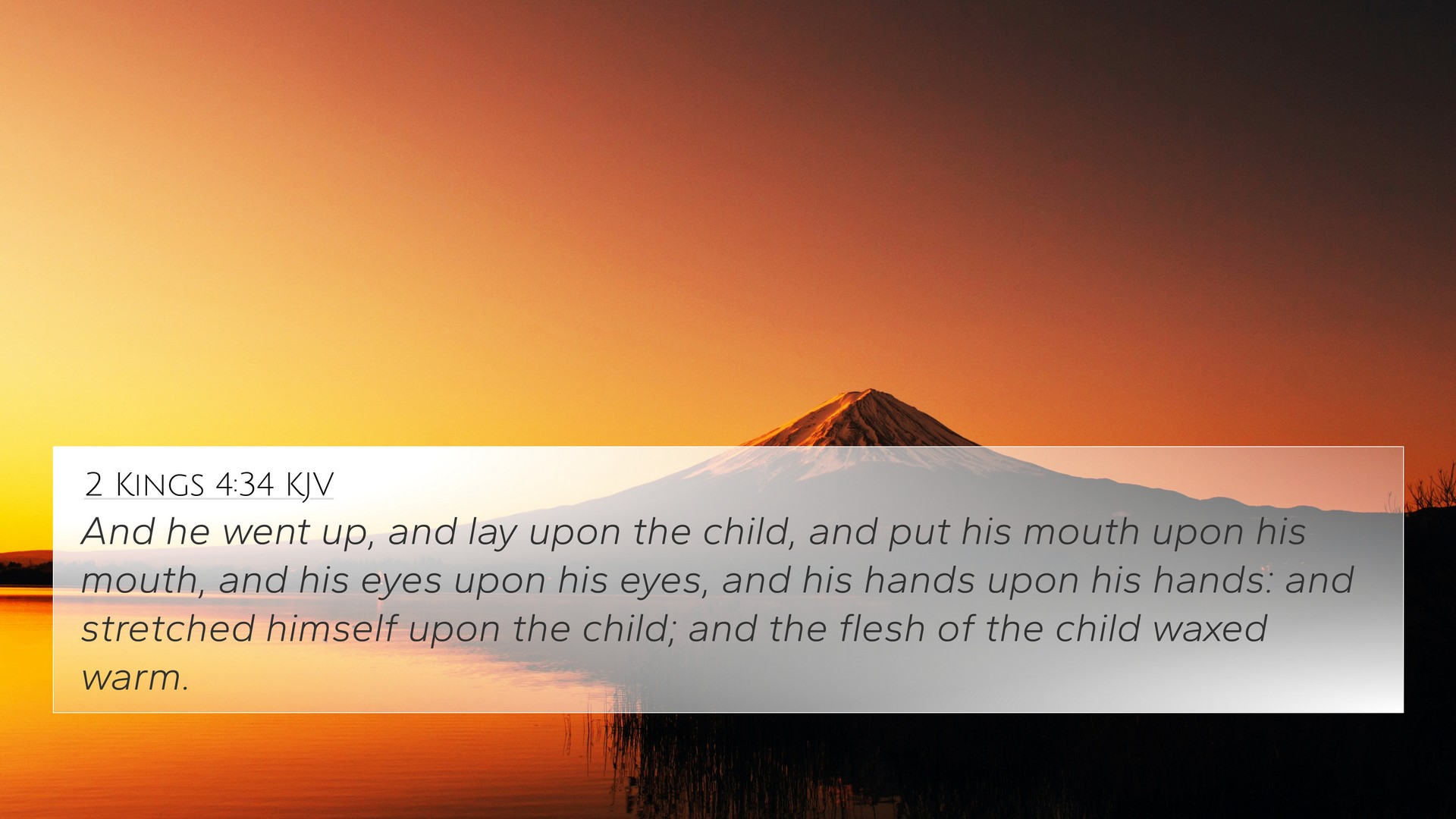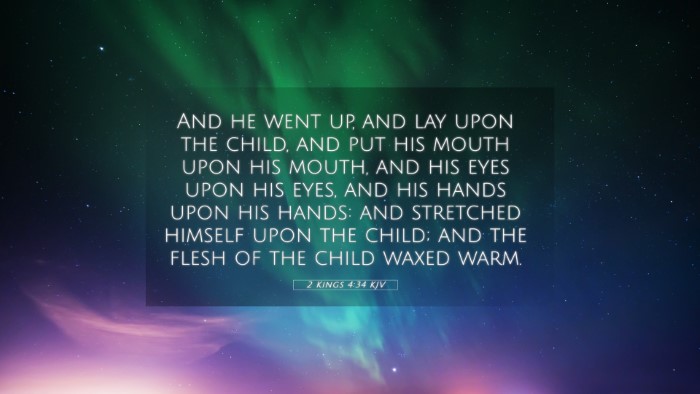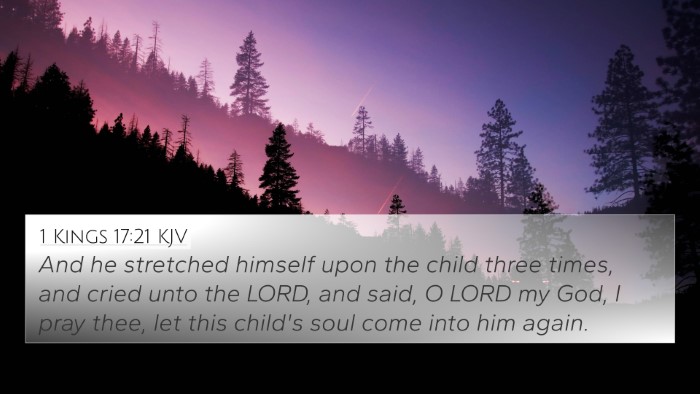Summary of 2 Kings 4:34
The verse 2 Kings 4:34 details a miraculous event involving Elisha, where he resurrects the son of the Shunammite woman. The passage portrays a significant moment showcasing God’s power through His prophet, highlighting themes of faith, divine intervention, and restoration. Below is a detailed exploration of the verse's meaning based on insights from well-known public domain commentaries.
Analysis of 2 Kings 4:34
In this verse, Elisha engages in a dramatic act of faith and miracle. The action of laying upon the child signifies a direct connection to the power of God. Both Matthew Henry and Adam Clarke emphasize the miraculous nature of Elisha's actions and God's sovereignty in matters of life and death.
-
Matthew Henry's Commentary:
Henry highlights the importance of Elisha's prayer and the physical act of laying upon the child, symbolizing the transmission of life. This act is interpreted as not just physical, but spiritual, showing the prophet as a mediator between God and the miraculous event of resurrection.
-
Albert Barnes' Notes:
Barnes notes the significance of Elisha’s faith and highlights the importance of following divine instructions in miraculous happenings. He points out that the act of laying on the child symbolizes the closeness of Elisha to God’s purpose and illustrates divine power in human situations.
-
Adam Clarke's Commentary:
Clarke provides a detailed explanation of the methodology behind Elisha’s actions, noting that the bodily contact was necessary for invoking God’s miraculous power. He emphasizes the physicality of the miracle, indicating a deep spiritual reality accompanying the event.
Thematic Connections
This verse connects with several themes in the Bible, especially concerning resurrection, miracles, and the power of prayer. The act of resurrection links to various biblical accounts where God intervened in human affairs. Below are some significant cross-references:
- 1 Kings 17:21-22: Elijah’s prayer for the widow’s son, which parallels Elisha’s miracle, reinforces themes of resurrection.
- Luke 7:14-15: Jesus raises the widow's son at Nain, a powerful testament to the continuation of miraculous resurrection through faith.
- John 11:43-44: Jesus raises Lazarus, showcasing Jesus’ authority over death, akin to Elisha's miracle.
- Matthew 9:25: Jesus raises the daughter of Jairus, further emphasizing God's power to restore life.
- Mark 5:41-42: Similar to the earlier examples, this depicts the authority of Christ in life restoration.
- Romans 8:11: A New Testament affirmation of the resurrection power at work in believers, drawing parallels to the miraculous acts in the Old Testament.
- Hebrews 11:35: While speaking about faith, it includes the mention of those who experienced resurrection, linking it back to Elisha's work.
- 2 Kings 4:36-37: Following the miracle, further affirming the reality of divine intervention and the woman’s faith.
- John 14:12: Jesus declares that believers will do greater works, echoing the acts of prophets like Elisha.
- 1 Corinthians 15:54-55: Discusses the ultimate victory over death, which is foreshadowed by the miracles in the Old Testament.
Practical Application
The events of 2 Kings 4:34 ignite a deep reflection on faith and prayer in our lives. The miraculous nature of God’s intervention serves as a reminder that prayer can bring about extraordinary outcomes in desperate situations. Understanding these themes also enhances our approach to Bible cross-referencing and scriptural analysis.
Understanding Bible Verse Connections
When studying the Bible, understanding connections between Bible verses facilitates deeper insights into scriptural themes. The acts performed by Elisha can be cross-referenced to various New Testament miracles, suggesting a thread of continuity in God’s work through His chosen messengers.
Tools for Cross-Referencing
Utilizing tools for Bible cross-referencing such as Bible concordances and cross-reference guides allows for a comprehensive study. These tools enhance our ability to identify connections between Old and New Testament themes, illustrating how God's word consistently reveals truths across biblical texts.
Conclusion
In conclusion, 2 Kings 4:34 serves as a profound reminder of God’s power and the importance of faith. Through the lens of the Bible and its interconnected passages, believers are encouraged to engage in cross-referencing Biblical texts to fully grasp the meanings, interpretations, and applications of Scripture in their lives. We find hope and assurance knowing that the same God who worked miracles in the past continues to intervene in our lives today.




